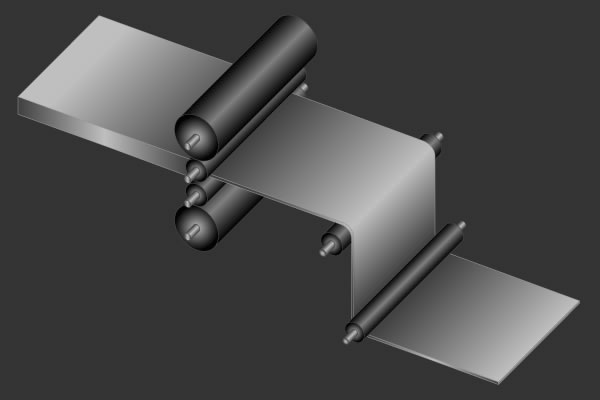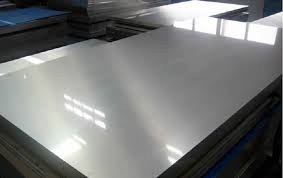Cold Rolled Steel – Improved Surface Finishes & Tighter Tolerances
Definition: Cold Rolled Steel is defined as the group of steels which has been passed through a rolling mill below its recrystallization temperature. The recrystallization temperature of steel is from four hundred centigrade to seven hundred centigrade. Recrystallization of steel is a microstructural phenomenon which is achieved by heating on the other hand distorted grains are substituted by a new combination of grains that nucleate and propagate till the parent grains have been completely transformed. Hot Rolled Steel is the type of steel that is rolled at the recrystallization temperature. Cold rolling is performed usually on hot rolled steels.
Important Industrial Grades of Cold Rolled Steels: One of the most common cold rolled material grade in Japanese standard is SPCC steel i.e. known as commercial quality cold rolled steel. AISI 1018 steel is another common type of cold rolled grade in American standard. ISO 3574 includes a special type of cold rolled grade i.e. called as extra deep draw quality and named as CR5 steel. Other types are also there for example draw quality cold rolled and deep draw quality cold rolled materials. Many hot dip galvanized materials like SGCC steel, electrogalvanized material SECC steel are made from cold rolled steels.
Advantages of Cold Rolled Steels: As the title of the article suggests cold rolled materials have following advantages over hot rolled materials:
- Improved dimensional tolerances & surface finishes can be achieved
- Improved and consistent mechanical properties such as hardness, tensile strength and yield strength can be achieved.
- The strength of steel is increased up to 20% after cold rolling due to strain hardening.
- Lower range of thickness can be achieved because of cold rolling.
Cold Rolled Steels are most used steel type. Type is graded by mechanical process. It is not distinguished by its chemistry but cold rolling process itself.
Applications of Cold Rolled Steels: There are hundreds of different applications of cold rolled materials and different industrial and commercial grades have different applications, some most common are listed as under:
- Used in Metal Furniture, Tables, Steel Chairs, and Steel Cabinets
- Used as input material for galvanization processes
- Extensively used in automotive sector in different body parts of automobiles
- Extensively used in different body parts of home appliances.
- Extensively used in motor bike exhaust pipes, rims, fuel tanks
- Extensively used to make pipes and tubes for different applications
Rolling Grades of Cold Rolled Steels: There are four different types of rolling grades which are listed as under:
- Full-hard rolling – This minimizes the thickness by fifty percent i.e. maximum
- Half-hard rolling – This minimizes the thickness by twenty five percent
- Quarter-hard rolling – This minimizes the thickness by twelve to thirteen percent
- Skin-rolled Steel – This rolling minimizes thickness at the least i.e. just the skin which is up to one percent at most.

Similar Industrial Processes compared with Cold Rolling: The word Cold Rolled is incorrectly utilized on many products, when specifically the name points to the rolling of flat rolled sheet & coil. When talking on bar materials, the correct word is cold finishing, which normally comprises of cold drawing, polishing, grinding & turning. This process induces increased yield points; benefit of each is listed below:
- Cold drawing elevates the yield and tensile strength, frequently removing any expensive heat treatments.
- Turning makes the material free from surface inadequacies.
- Grinding squeezed the parent tolerance band.
- Polishing induces consistent surface finish.
Lead your Product Development Department today! Cold rolled steel is the most widely used steel in the world due to its consistent material behavior, strength, dimensions controls, and greater service life. If being a manufacturer and user of steel you have never tried it then think again! You can minimize the cost, improve the quality or make your product more efficient. Lead your product development department to make a feasibility analysis of using this material in your product today.








Subject: Enquiry on SPCC Material & its DATA SHEET
Dear Mr. SHEIKH IMRAN,
I am writing to ask if you provide any SPCC material having a chemical composition C: 0.042%, Mn: 0.021%, P: 0.014%, S:0.05%. If yes, what are the item number(s)? Do you have the relevant data sheet that it covers the remanence, coercivity, max energy product, temp coefficient, max. working temperature.
I am looking forward to hearing from your reply. Thank you.
Best regards,
Sandy WS Lam (C/O YH Lui)